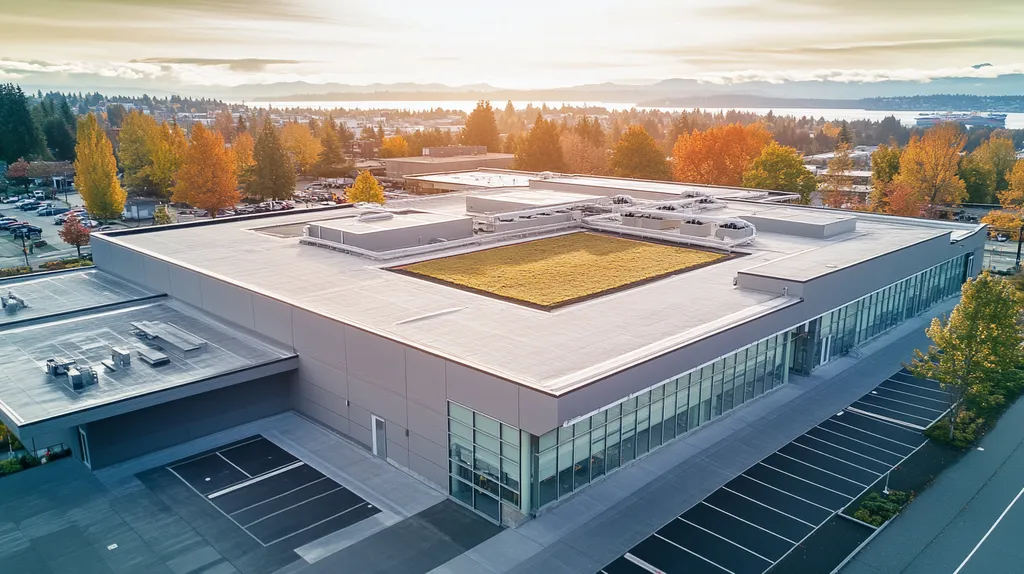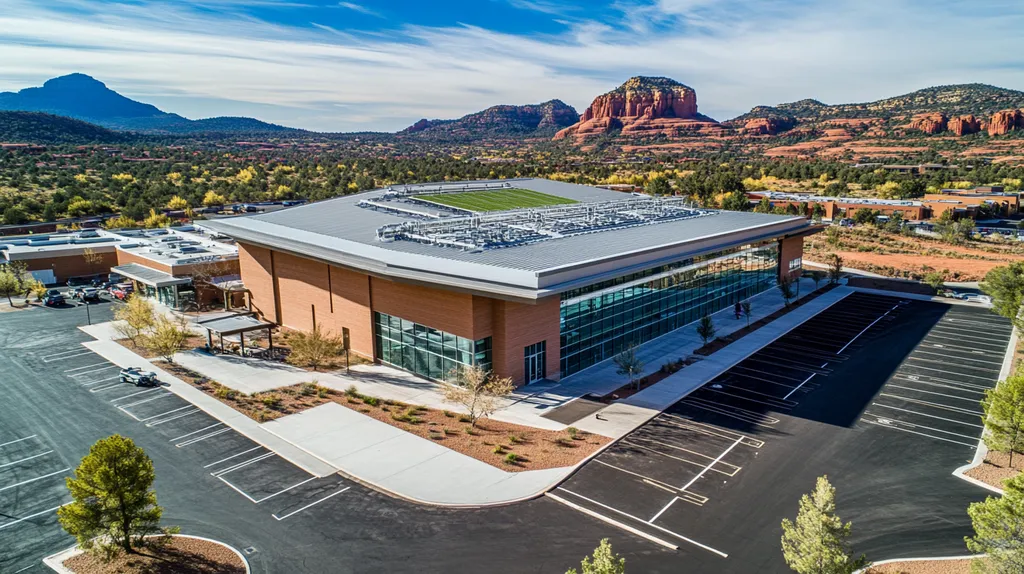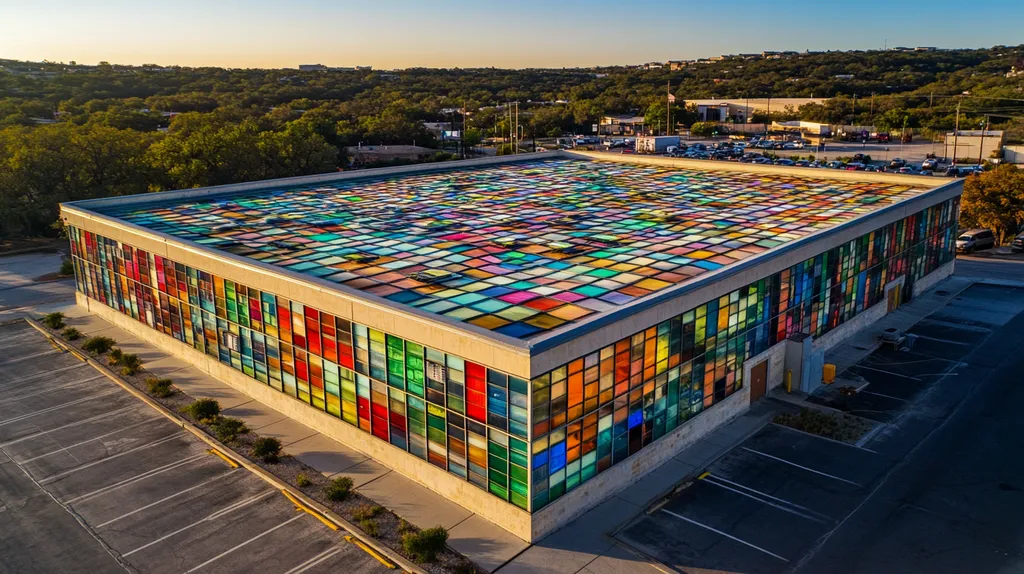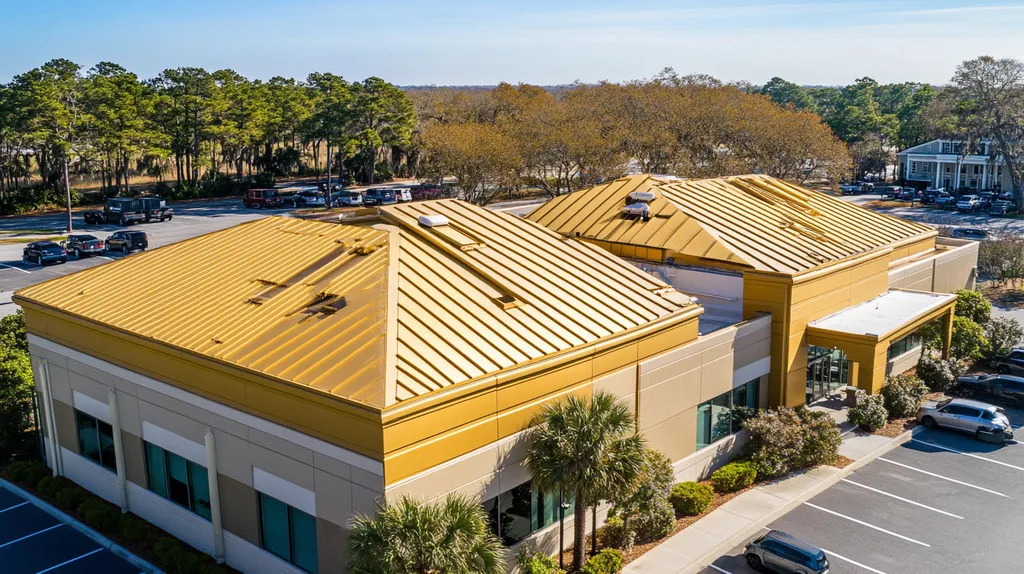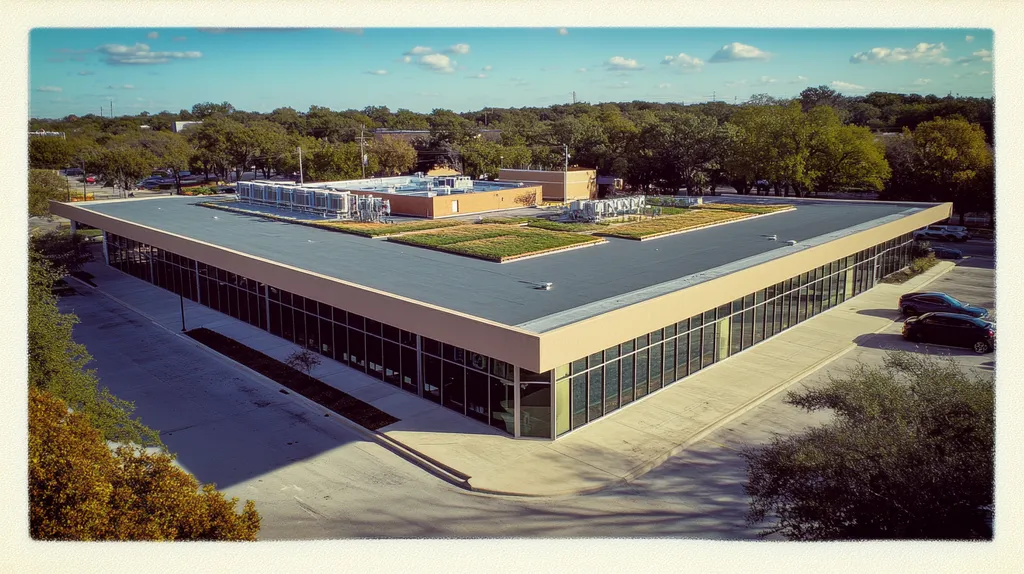In commercial roofing, moisture protection isn’t just important—it’s the difference between a thriving facility and a catastrophic failure. Recent industry studies reveal that 40% of commercial roof failures stem from inadequate moisture protection, leading to billions in annual repair costs.
While roof coatings promise to shield buildings from water damage, widespread misconceptions about their application and maintenance continue to plague property managers. From material selection blunders to inadequate surface preparation, these errors can slash a roof’s lifespan by half.
This comprehensive guide cuts through the confusion, revealing the truth about moisture protection in commercial roof coatings and offering evidence-based solutions for lasting performance.
SECTION 1: COMMON MISCONCEPTIONS
The need for effective moisture protection in commercial roof coatings is nothing short of critical. Poor moisture management can lead to catastrophic roof failures, resulting in sky-high repair costs and disruptive downtime. Alarmingly, a recent industry survey found that nearly 40% of facility managers have faced moisture-related roofing issues. To safeguard building integrity, it’s crucial to dissect common misconceptions surrounding roof coatings.
Misunderstanding Coating Materials
Many property owners mistakenly think all roofing coatings are created equal. This flawed perception can lead to choosing a product that falls short of their building’s unique environmental and performance needs. Different coatings, such as acrylic and silicone, bring specific advantages tailored to various climates and structures.
For example, silicone coatings thrive in wet environments, maintaining their performance even when the sky opens up. Conversely, acrylic coatings can degrade faster when exposed to intense UV rays. Overlooking these discrepancies may cause premature wear, escalated maintenance costs, and, ultimately, roof failure. Therefore, carefully assessing the characteristics of each coating type is essential.
It’s also important to recognize that not all coatings deliver the same level of moisture resistance. Factors like permeability—the ability of water vapor to pass through—play a crucial role. Choosing a high-permeability coating in a humid climate can set the stage for moisture retention issues. Instead of focusing merely on cost, it’s vital to consider important performance metrics too.
Property managers should consult roofing professionals to pinpoint the best coating materials suited for their conditions. This informed selection can significantly enhance roof longevity and performance.
Ignoring Surface Preparation
Another widespread misconception is underestimating the importance of surface preparation before applying a roof coating. Some believe a simple cleaning will do the trick, but this inadequate approach can severely diminish the coating’s efficacy. Effective surface preparation goes beyond cleaning; it involves addressing existing damage and ensuring the best possible adhesion.
Skipping this crucial step can trap moisture beneath the coating, leading to issues like blistering and peeling. This not only compromises the coating’s integrity but also opens the door to leaks and potential water damage. Studies indicate that a staggering 50% of coating failures can be traced back to improper surface preparation.
Additionally, the type of substrate significantly influences the preparation process. Materials such as metal or concrete each require tailored treatment approaches. Careful assessment of the roofing surface and performing necessary preparations will establish a solid foundation for the coating’s success.
Committing time to thorough surface preparation is vital for extending the life span of the coating while ensuring robust moisture protection. Engaging experienced roofing professionals for this critical step can prevent costly setbacks in the future.
Overlooking Maintenance Needs
Many property owners fail to recognize the critical nature of ongoing maintenance after roof coatings are applied. They might operate under the illusion that coatings serve as a permanent solution for moisture protection, resulting in neglect of regular inspections and upkeep. This misunderstanding can lead to significant consequences.
Coatings bear the brunt of environmental factors like UV exposure and temperature shifts, causing them to deteriorate over time. Regular maintenance is key for spotting early signs of wear, allowing for timely repairs and preventing smaller issues from ballooning into large problems affecting the entire roofing system.
Experts suggest conducting comprehensive inspections at least twice a year, especially after major weather events. Implementing a consistent maintenance schedule will greatly extend the life of coatings and reinforce moisture management efforts.
Furthermore, keeping meticulous documentation of maintenance activities strengthens the case for necessary repairs and justifies future roofing budget allocations. Raising awareness about the ongoing maintenance requirement can significantly enhance long-term outcomes for commercial roofing systems.
SECTION 2: PRACTICAL IMPLICATIONS
Effective moisture protection in commercial roof coatings is more than just a technical necessity; it’s a game-changer for the lifespan and performance of roofing systems. Ignoring moisture management can lead to roof failures that strike hard on your budget. It’s staggering to consider that roofs lacking proper moisture protection can lose up to 30% of their expected lifespan, dramatically increasing replacement costs. This section dives into the vital implications of moisture management on roof lifespan, energy efficiency, and structural integrity.
Impact on Roof Lifespan
Moisture buildup is a primary culprit in the decline of roofing systems. When water seeps into roofing layers, it creates a breeding ground for mold and rot. Research indicates that roofs with inadequate coatings may fail within just 10 years, whereas properly protected roofs can last 20-30 years. That’s a big difference!
Moreover, moisture can also lead to the delamination of roofing materials. This not only shortens the roof’s lifespan but can necessitate expensive repairs or total replacements. By investing in high-quality moisture-resistant coatings, facility managers can significantly enhance the durability of their roofs.
Regular maintenance and timely inspections are crucial for catching moisture-related issues early. Swift interventions can prevent extensive damage and prolong the effectiveness of the roof. Therefore, property owners should consider moisture protection as a cornerstone of any effective roofing strategy.
A roof that effectively defends against moisture doesn’t just last longer; it also translates to significant savings over time. Addressing moisture challenges directly fosters a healthier financial outlook for any commercial property.
Effects on Energy Efficiency
Moisture infiltration can wreak havoc on a building’s energy efficiency. Waterlogged roofing materials often lose their insulating properties, pushing energy consumption for heating and cooling to higher levels. Studies have shown that compromised roofs can lead to energy bills soaring by 15-20%!
Additionally, moisture can create thermal bridging, where heat escapes through damp areas of the roofing system. This inefficiency makes climate control less effective and drives utility costs up. Consequently, tackling moisture with adequate coatings is essential for maximizing energy performance.
Advanced coatings can reflect sunlight, helping keep indoor temperatures cooler during summer months. This not only enhances occupant comfort but also slashes energy usage. Thus, recognizing the importance of moisture protection plays a pivotal role in transforming energy management for commercial properties.
By opting for moisture-resistant coatings, properties can bolster energy efficiency while positively impacting the environment. This dual advantage underscores why moisture protection deserves the spotlight in commercial property management.
Consequences for Structural Integrity
Moisture presents serious risks to the structural integrity of roofing systems. Extended exposure to water leads to corrosion of metal components and compromises supporting structures. Such deterioration can cause considerable stress throughout the building, potentially resulting in costly repairs.
Moreover, moisture-related structural damage can remain hidden until it escalates into a significant issue. This silent threat can jeopardize the safety of the facility, making proactive moisture management essential. Conducting regular inspections and employing robust coatings can help prevent these risks from spiraling out of control.
In some situations, moisture problems can also undermine compliance with building codes and safety regulations, exposing property owners to legal and financial risks. By prioritizing moisture protection, facility managers not only safeguard their buildings but also protect their investments.
Addressing moisture-related concerns is crucial for maintaining the integrity of commercial buildings. A comprehensive roofing strategy that emphasizes moisture management not only protects the roof but also ensures the longevity and safety of the entire structure.
SECTION 3: COST OF MISINFORMATION
The stakes of misinformation in commercial roofing are incredibly high. Failing to grasp the importance of proper moisture protection can lead to staggering financial losses. According to industry studies, property owners can end up spending up to 30% more on repairs due to moisture-related problems that could have been avoided. These expenses highlight the pressing need to understand the factors contributing to roofing failures, particularly those related to moisture management.
Financial Burden of Repairs
The financial impact of misinformation around moisture protection in roofing can be staggering. When moisture infiltrates a roofing system, it often causes extensive damage that results in unexpected repair costs. Many property owners miscalculate the expenses involved in replacing damaged materials and structural components, leading to budget surprises.
For instance, a roof that develops leaks due to inadequate coatings may require a complete overhaul, racking up tens of thousands of dollars in expenses. Moreover, ongoing maintenance can become a perpetual financial burden that disrupts budgets for years.
These unexpected costs ripple through an organization, complicating resource allocation and decision-making. Property managers may find it hard to justify sudden roofing expenses while striving to keep their operations running smoothly.
Ultimately, misinformation regarding moisture protection can shrink profit margins and strain cash flow. For this reason, it’s crucial that managers invest in accurate, actionable roofing information for long-term savings.
Energy Cost Increases
Energy costs are a significant concern for commercial property owners, and poor moisture management can exacerbate these expenses. When moisture damages roofing materials, it jeopardizes insulation effectiveness, resulting in increased energy loss and higher heating and cooling bills.
A commercial building suffering from moisture-damaged insulation might see energy costs jump by 20% or more. Such increases can heavily impact the profitability of a facility, especially for businesses that rely extensively on climate control.
Furthermore, leaks that go unchecked can create lost opportunities for energy efficiency enhancements. Many modern roofing systems come equipped with reflective coatings designed to reduce energy costs, but misinformation can hinder facility managers from selecting the right materials.
By prioritizing accurate information about moisture protection, property owners can make informed choices that bolster energy efficiency while keeping their costs in check.
Loss of Productivity
Another critical impact of misinformation surrounding moisture protection is its potential to disrupt productivity within a commercial facility. Water intrusion can lead to work interruptions, causing delays that affect employee morale and operational efficiency. Affected areas may need to be closed off for repairs, leading to lost working hours.
In industries where timely service is paramount, such as manufacturing and retail, downtime can have severe consequences. For example, a manufacturing plant dealing with roofing problems may have to halt production, resulting in unmet quotas and delayed product deliveries.
Additionally, moisture-related issues can lead to mold growth, posing health risks for employees. This concern can translate into increased absenteeism and potential liabilities for the owner.
Therefore, investing in accurate knowledge about moisture protection is not merely about safeguarding a building’s integrity; it is essential for maintaining productivity and ensuring workplace stability over the long haul.
SECTION 4: REALITY CHECK
Understanding moisture protection in commercial roof coatings is essential for upholding the integrity of any building. Without a solid understanding, moisture can stealthily erode roofing systems, leading to steep repair bills and unexpected roof failures. In fact, around 80% of roof-related issues stem from moisture problems. By familiarizing themselves with key elements—moisture transmission, adhesion, elongation, and UV resistance—property owners and facility managers can make smarter choices to safeguard their investments.
Understanding Moisture Transmission
Moisture transmission plays a pivotal role in how well a commercial roof performs and lasts. It happens when water vapor or liquid sneaks into the layers of roofing material, often resulting in serious issues like mold growth and structural deterioration.
Many property managers might overlook the intricate pathways moisture can take, mistakenly believing that coatings alone can shield their roofs. In reality, moisture can seep through hairline cracks and tiny pinholes, causing damage that requires extensive repair efforts.
Grasping how moisture behaves is vital for choosing the right materials for roofing systems. While modern coatings offer significant protection, it is equally important to evaluate the roofing substrate and the environmental conditions that affect moisture levels.
Ultimately, effective moisture management calls for a comprehensive understanding of both the roofing system and the unique climate it faces. This foundational knowledge is key to maintaining the roof’s integrity over the long term.
Importance of Adhesion and Elongation
Adhesion represents how well a roof coating binds to its substrate. Weak adhesion can lead to problems like delamination and peeling, allowing moisture to penetrate the roofing system. A strong adhesive bond is essential for ensuring the long-term resilience of the roof.
Elongation gauges a material’s ability to stretch without tearing—a critical property in environments with fluctuating temperatures. High elongation values allow a roofing material to adapt to thermal expansion and contraction, protecting it from cracking at vulnerable points.
For instance, a coating with poor elongation could split in colder weather, exposing gaps for moisture intrusion. Therefore, property managers should focus on investing in coatings with robust adhesion and elongation properties, particularly in regions that experience extreme weather.
Collaborating closely with reputable manufacturers can ensure that chosen coatings meet these vital performance benchmarks. This proactive relationship can help prevent moisture-related issues before they escalate into costly repairs.
Role of UV Resistance
Ultraviolet (UV) radiation can have a dramatic effect on the effectiveness of commercial roof coatings. Over time, exposure to UV rays can deteriorate roofing materials, resulting in cracking and loss of elasticity, which heightens the risk of moisture infiltration.
Investing in UV-resistant coatings is therefore critical for shielding the roofing surface from the harsh effects of sunlight. A well-designed coating can effectively reflect UV rays, extending the lifespan of the roofing materials while curtailing premature failures.
Case studies indicate that roofs outfitted with UV-resistant coatings have significantly longer lifespans compared to those without. Such coatings can reduce thermal cycling and mitigate the damaging impact of radiation on the roofing surface.
The long-term savings from fewer repairs and extended roof longevity more than justify the initial investment in high-quality UV-resistant products. Incorporating these materials isn’t merely prudent; it’s a strategic decision to minimize repair costs while maximizing asset value.
SECTION 5: EVIDENCE-BASED ALTERNATIVES
In the quest for top-notch moisture protection for commercial roofs, choosing the right coating is essential. With environmental pressures and maintenance expenses on the rise, property owners must carefully evaluate their choices. The rivalry between silicone and acrylic coatings underscores the necessity of informed decision-making. Exploring advanced materials and technologies also reveals a wealth of benefits for durability and efficiency. This section dives into tailored, evidence-based alternatives to fortify moisture protection strategies.
Silicone vs. Acrylic Coatings
When it comes to moisture protection, silicone and acrylic coatings offer unique benefits that cater to different needs. Silicone coatings excel in waterproofing, making them the go-to choice for flat roofs prone to pooling water. Their seamless application creates a formidable barrier against leaks, helping to cut long-term repair costs.
Acrylic coatings, which are water-based and environmentally sound, shine in their UV resistance and ability to maintain roof integrity in harsh sunlight. However, they may struggle in situations where water tends to pool, which is where silicone shines.
The choice between silicone and acrylic coatings hinges on the building’s specific requirements and environmental conditions. For instance, roofs in regions with heavy rain may find silicone’s durability more advantageous, while structures in sun-drenched areas could benefit from acrylic’s reflective features.
Ultimately, understanding the distinctions between these coating types is crucial for making a wise investment. Thorough assessments of the roofing system will enable property owners to choose the best solution for optimal moisture protection.
Benefits of High-Reflectivity Coatings
High-reflectivity coatings are vital players in promoting sustainability and energy efficiency within roofing systems. These coatings help bounce back sunlight, reducing heat absorption, which in turn lowers internal temperatures and slashes energy usage. For commercial properties, this can mean substantial savings on air conditioning bills.
By reflecting sunlight, these coatings also extend the lifespan of roofing materials, minimizing the need for frequent replacements. Lower temperatures contribute to a notable decrease in the risk of condensation and mold growth, thereby enhancing moisture protection.
Moreover, high-reflectivity coatings often outperform their conventional counterparts in terms of longevity. This durability not only boosts moisture resistance but also cuts down on maintenance frequency and associated costs.
As energy efficiency becomes increasingly crucial in commercial operations, high-reflectivity coatings represent a smart investment. This approach not only aligns with environmental goals but also offers peace of mind to budget-conscious property managers.
Advanced Materials and Technologies
The roofing sector is experiencing a wave of innovative materials and technologies that elevate moisture protection. Reinforced membranes and hybrid coatings have emerged to offer exceptional durability and performance, specifically engineered to counter moisture infiltration challenges.
Reinforced membranes provide heightened strength, thereby boosting the roofing system’s lifespan by protecting against tears and punctures. Hybrid coatings skillfully merge the advantages of both silicone and acrylic, ensuring top-tier waterproofing alongside robust UV defense.
Additionally, cutting-edge moisture sensors can alert facility managers to potential leaks before they escalate into significant problems. By incorporating these solutions into maintenance strategies, property owners can tackle moisture concerns head-on.
Investing in these advanced options positions facilities to better withstand unpredictable weather events. This proactive approach not only safeguards the building’s integrity but also enhances the property’s overall value.
SECTION 6: TEST AND VERIFY
In the fast-paced world of commercial roofing, testing and verifying moisture protection not only matters—it can save your structure from potential disasters. Neglecting these critical steps can lead to troublesome leaks and costly structural damage. In fact, roofs that skip proper evaluations can lose up to 30% of their integrity over time, directly affecting safety and financial investments. This section will unravel vital testing standards, the necessity of real-world evaluations, and what to consider about warranties to effectively protect vulnerable properties.
ASTM Standards and Testing
Following ASTM (American Society for Testing and Materials) standards is essential for ensuring commercial roof coatings deliver on their promises. These widely recognized guidelines cover critical performance aspects such as adhesion, flexibility, and moisture resistance. By sticking to these established benchmarks, roofing professionals can assure their coatings are ready to withstand a variety of environmental challenges.
For instance, ASTM D3359 tests adhesion using a tape method to evaluate whether a coating can endure challenging conditions like foot traffic and harsh weather. Thorough testing against these standards safeguards both the roofing system and the property owner’s hard-earned investment.
Additionally, coatings must undergo water resistance tests designed to predict penetration rates over time, providing valuable insights for future maintenance planning.
Applying ASTM testing standards lays the groundwork for effective moisture protection strategies, keeping commercial assets safe and sound.
Field Performance Evaluations
Conducting field performance evaluations is crucial for understanding how roof coatings perform in real-world conditions. These evaluations are key not just for assessing immediate performance but also for revealing weaknesses that lab tests may overlook. By regularly monitoring roofs post-installation, facility managers can identify early signs of failure, such as blistering or cracking.
Periodic inspections after the installation phase can inform maintenance schedules and product selection for future coating applications. If a coating shows signs of wear within just a few years, it might indicate that a different product or application method is needed.
Real-world evaluations provide an invaluable confidence boost in moisture protection measures, highlighting that lab results don’t always translate perfectly to actual conditions. Facility managers who prioritize field evaluations can significantly lengthen the lifespan of their roofs.
Ultimately, these on-site assessments provide crucial data to refine maintenance strategies and extend roof life, underscoring the importance of ongoing verification in roofing initiatives.
Warranty and Guarantee Considerations
Understanding warranty and guarantee terms when investing in commercial roof coatings is vital for safeguarding property assets. Warranties typically detail the manufacturer’s commitment to product performance for a set duration, but these protections can vanish if the roofing system isn’t tested and verified per industry standards.
A strong warranty will generally cover moisture-related issues, but only when proper maintenance and inspections are consistently performed. Maintaining detailed records of all testing, inspections, and maintenance activities helps uphold warranty conditions.
Additionally, the guarantees accompanying roof coatings should clearly outline expectations around moisture protection and the claims process for addressing damages. Property owners must be diligent in scrutinizing warranty language to make informed decisions about their coating options.
Thus, understanding warranty details goes beyond mere coverage—it is an investment in security that ensures compliance and protection against future moisture troubles.
The Bottom Line
With 40% of commercial roof failures stemming from moisture-related issues, the stakes couldn’t be higher for property owners and facility managers.
The evidence is clear: proper moisture protection through quality coatings can double a roof’s lifespan while slashing energy costs by up to 20%.
Moving beyond common misconceptions about coating materials and maintenance requirements, success lies in selecting appropriate materials, conducting thorough testing, and implementing regular inspections.
Modern coating technologies—from advanced silicone solutions to high-reflectivity options—offer unprecedented protection when properly applied and maintained.
By embracing evidence-based practices and staying current with industry standards, facility managers can transform their roofs from potential liabilities into durable, efficient assets that protect their investments for decades to come.
FREQUENTLY ASKED QUESTIONS
Q. What are common misconceptions about commercial roofs?
A. Many owners believe all coatings offer equal protection, which isn’t true. Depending on types like silicone or acrylic, performance can vary significantly, impacting your roof’s durability. Choosing the right coating based on your environment is vital to prevent costly damage.
Q. How does moisture affect the lifespan of an industrial roof?
A. Moisture buildup can drastically shorten the lifespan of roofs, leading to issues like mold growth and structural degradation. Proper coating can enhance durability, extending the life of your industrial roof to 20-30 years compared to just 10 years for unprotected ones.
Q. What costs arise from misinformation about commercial roof coatings?
A. Misinformation can lead to costly repairs, often inflating maintenance budgets beyond expected figures. Without a clear grasp of proper moisture control, property owners may spend up to 30% more fixing problems that adequate coatings could have prevented.
Q. How can I test moisture protection on my commercial roof?
A. Following ASTM standards for adhesion and moisture resistance is essential. Conducting field performance evaluations also helps identify weaknesses missed in initial testing, enabling early intervention and maintaining your roof’s integrity over time.
Q. What is the importance of UV resistance in commercial roof coatings?
A. UV resistance is crucial for protecting roofing materials from damage that leads to moisture infiltration. Coatings designed to reflect UV rays extend the lifespan of roofs and reduce maintenance frequency, ensuring long-term performance and cost savings.
Q. How do silicone and acrylic coatings differ for moisture protection?
A. Silicone coatings excel in waterproofing and are ideal for flat roofs, while acrylic coatings provide excellent UV resistance. Your choice should depend on specific environmental challenges, ensuring optimal moisture protection for your roof’s needs.
Q. What role do warranties play in commercial roof coatings?
A. Warranties protect your investment by covering moisture-related issues when conditions are met. It’s important to maintain detailed records of inspections and testing to uphold these warranties, ensuring you are covered in case of future damages.


